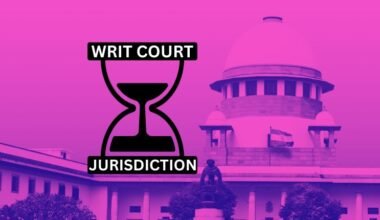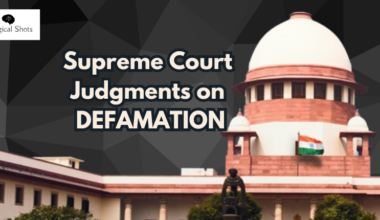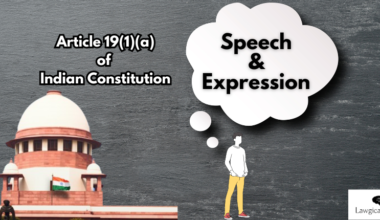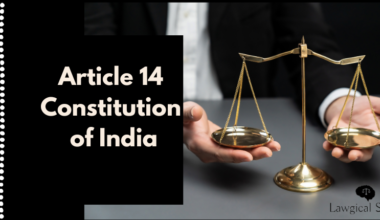Veerendra v. State Of Madhya Pradesh (2022) in Supreme Court of India.
The case herein revolves around the brutal act of sexual assault and killing of an 8-year-old girl. The Trial court found the appellant guilty of rape and murder. The High court also upheld his guilt and confirmed the death penalty awarded for the appellant. In the instant appeal, the Supreme Court commuted the sentence of death penalty and awarded life imprisonment without the chance for an early release or remission till he actually served a sentence of 30 years.
Legal Picture of the Case
On 19th September 2014 the crime took place in an abandoned building at midnight where the appellant sexually assaulted the 8-year girl and then next day her body was discovered and the appellant was arrested.
The Trial Court found the appellant guilty and convicted him under Sections 302, 376A, 376(2)(i) of Indian Penal Code, 1860 and Section 6 of the POCSO Act. A sentence of death penalty, imprisonment for life and fine was passed against him and ordered to run consecutively. The appellant filed a criminal appeal and the High Court partly allowed the same to set-aside the offence under section 376A on technical grounds, but affirmed the sentences under section 376(2)(i), 302 and section 6 of the POCSO Act. The death penalty was confirmed by the High Court as well.
Facts of the Case
The appellant was 8-YO deceased girl’s mother’s cousin brother, and hence, her maternal uncle. The incident occurred when the appellant’s father sent the girl to buy a packet of bidi from an adjacent shop.
While on her way, she crossed the appellant and two of his companions who were drinking, who followed her and promised to return. After midnight, her mother filed a missing complaint for her daughter. After interrogation, the appellant revealed about the incident which led to the recovery of the deceased girl’s nude body beneath gunny bags from the place of occurrence. The post-mortem report revealed that the girl was raped and killed by strangulation.
Issues Raised
1. Whether the appellant’s conviction under IPC Section 302 appears maintainable based on the medical records presented in the court?
2. Should the benefit of doubt be given to the appellant based on the medical evidence presented in the court?
Petitioner’s Arguments
The Amicus Curiae representing the appellant contended that he was found guilty just on the basis of the incidental evidence, and that there were gaps in the circumstantial evidence sought to prove the case totally against the appellant.
She further argued that the FSL report was questionable because it did not associate the blood and semen found on clothes to be those of the appellant, thereby violating Sec 53A of CrPC. The Amicus Curiae argued to extend the benefit of doubt leading to the acquittal of the appellant.
Respondents Arguments
The counsel for the State fortified that the Trial Court and HC properly analysed the proof, leading to simultaneous discoveries.
The counsel concluded that the incidental evidence jointly points to the appellant’s culpability and is unsuited with any claim of innocence.
Supreme Court Judgment
The SC in the judgement upheld the conviction based on the mix of the circumstantial evidence and the medical opinions that pointed towards the guilt of the appellant. The main evidence in the case was provided by the medical team which conducted the post-mortem of the deceased.
The medical report showed that the deceased, an eight-year-old girl, had numerous injuries, and the cause of death was determined to be suffocation due to strangulation. The medical evidence recommended that the manner of death was constant with the vicious acts accredited to the appellant. The doctor’s inspection discovered approximately eight wounds on the body of the dead, which were substantial in founding the nature of the crime. The medical evidence was associated with the prosecution’s narrative, affirming the case against the appellant.
The SC relied on a previous judgement which affirmed the conviction of the appellant solely on the basis of the incidental evidence and the evidence provided in the court was deemed to be sufficient to establish the guilt beyond reasonable doubt.
Supreme Court on reliability of Medical opinion
Since the appellant pressed upon the incongruence in the medical opinion regarding cause of death under the offence punishable with Section 302 of IPC, the Court looked at the probative value of the deposition of a doctor, deposing as an expert. The Court made it clear that “Though the opinion of the doctor given with the support of postmortem report is entitled to get great weight, the court cannot abdicate its function as the ultimate opiner. Taking into account the ocular and medical evidence and upon their deeper analysis, the court has to form and record its opinion as to the cause of death for the purpose of finding out whether the death involved in a given case is accidental or suicidal or homicidal, in nature.” The Court looked at the evidence regarding injuries sustained by the deceased and upheld the concurrent finding of the Trial Court and High Court that the death was caused by strangulation and the deceased was subjected to rape.
Lack of DNA Profiling and Law
The Apex Court considered whether non-conduct of DNA profiling violating the requisites under Section 53A of CrPC could be the sole basis for setting aside the appellant’s conviction. However, the Court refrained from being oblivious to the settled position that an accused could not be acquitted on account of defects/shortcomings in investigation, while the rest of evidence was cogent enough to sustain the conviction.
The Apex Court expressed that “a different approach in re-appreciating the evidence would have defeated dispensation of justice, as in cases based on circumstantial evidence also it is not the quantity of the evidence that counts, but it is its quality. In other words, the question is only whether a complete chain of circumstantial evidence of such a character that the same is wholly inconsistent with the innocence of the accused and is consistent only with his guilt, is available.”
Death Penalty in Rarest of Rare Cases
On award of death penalty based on circumstantial evidence, the Court observed that “Rarely, death penalty would be awarded if the conclusion on the connection of the accused with the offence(s) is fixed based on circumstantial evidence. It is true that even in such cases existence of exceptional circumstances/special circumstances would make death penalty awardable.” The Court referred to the decision in Rajendra Pralhadrao Wasnik Vs. State of Maharashtra (2019) in this regard. While looking at the seriousness of the offence committed, and the aggravating and mitigating factors while weighing for rarest of rare crime, the Court eyed at the 25 YO appellant and was hopeful for reformation and rehabilitation. Therefore, the Court commuted the death sentence to life imprisonment.
This is a GUEST POST made by Mr Devansh Bansal, explaining the intricacies of medical evidence through Supreme Court verdict.








